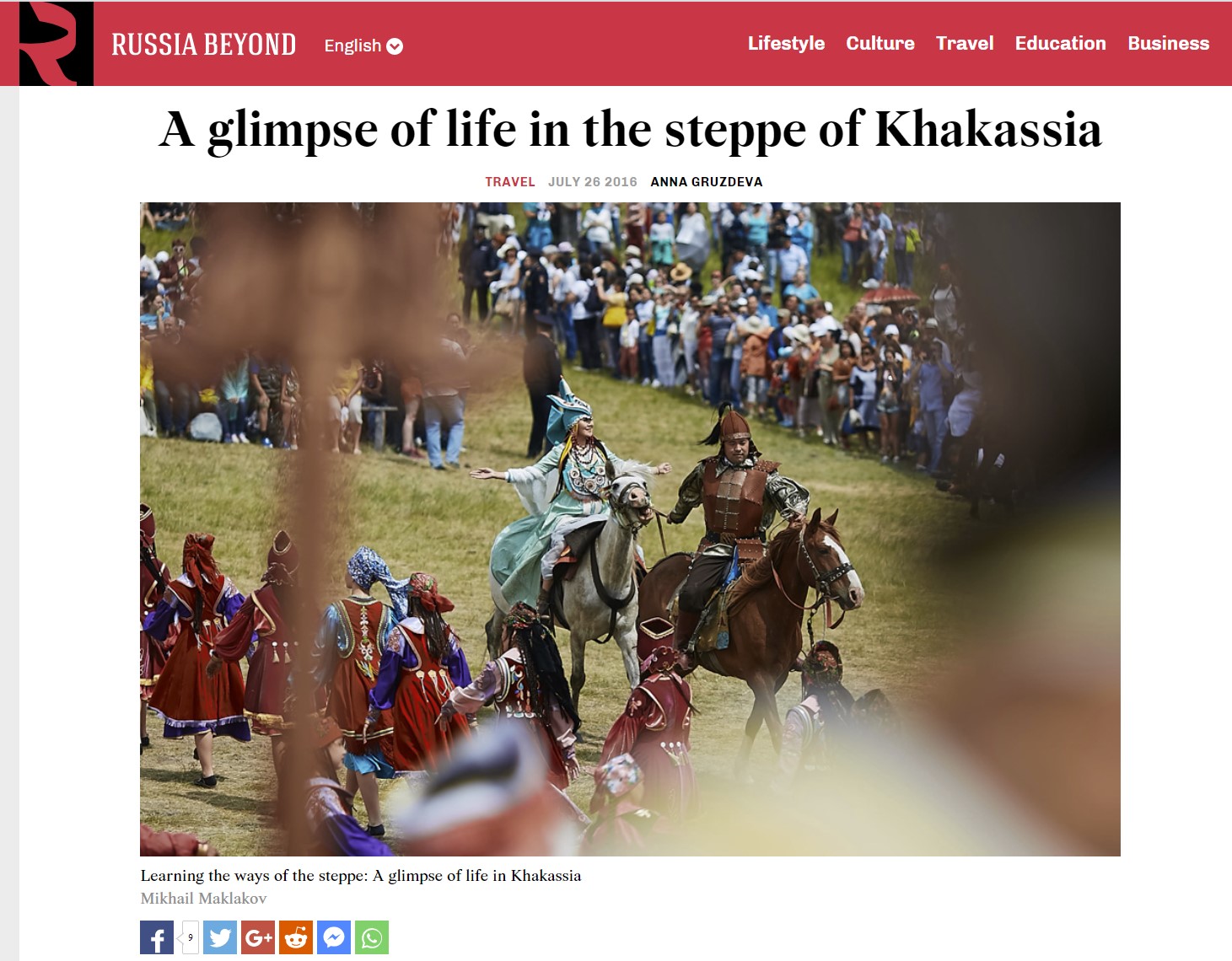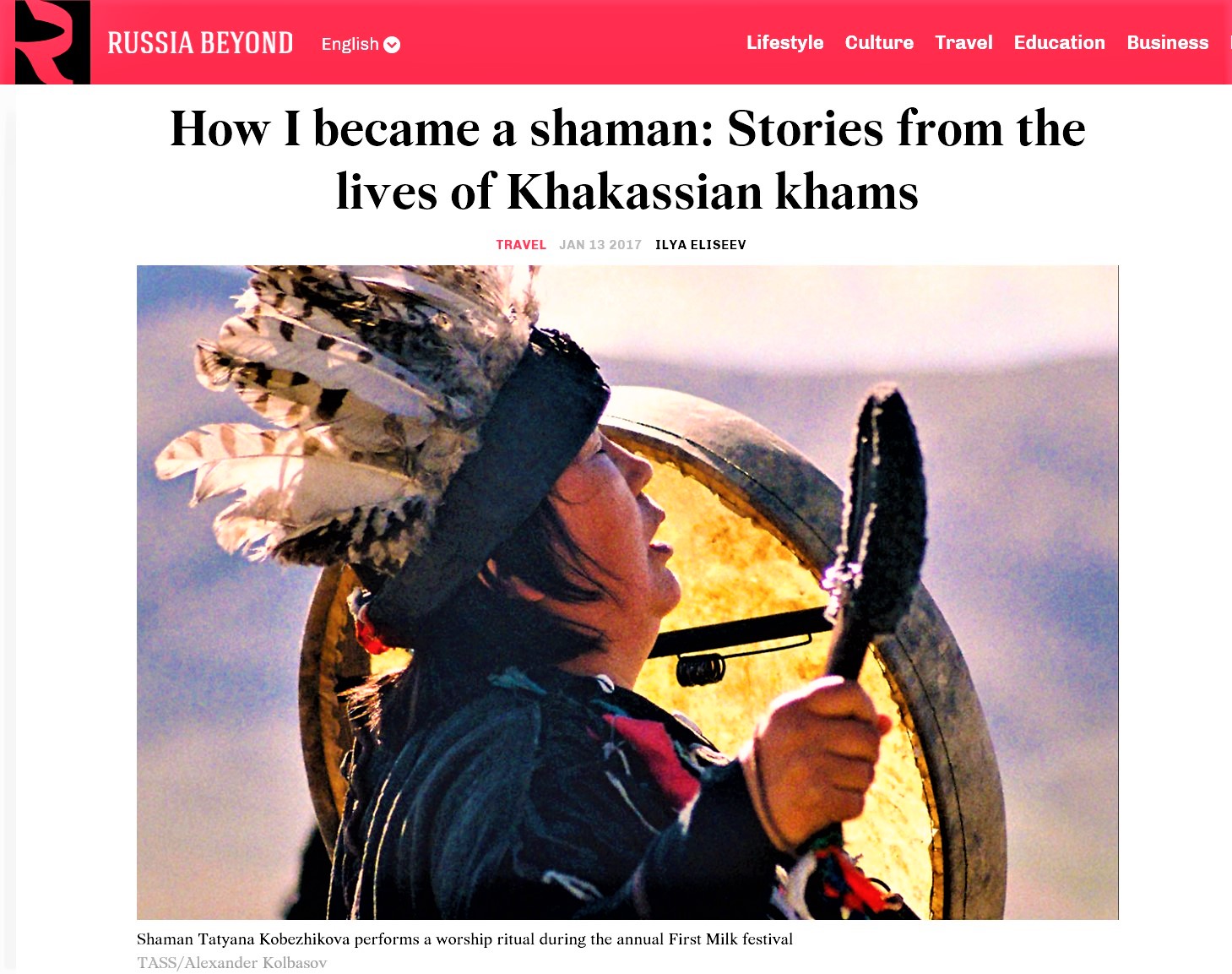KHAKASSIA Republic Profile
The republic is located in the southwestern part of Eastern Siberia (Central Siberia) and borders Krasnoyarsk Krai,the Tuva Republic, Altai Republic and Kemerovo Oblast. It stretches for 460 kilometers (290 mi) from north to south and for 200 kilometers (120 mi) from east to west. Mountains (eastern slopes of Kuznetsk Alatau and the Abakan Range) cover two-thirds of the republic's territory and serve as the natural boundaries of the republic. The remaining territory is flat, with the Minusinsk Hollow being the most prominent feature. The Yenisei is the largest river in the republic. Other major rivers are the Abakan, Tom’, White Iyus, Black Iyus, and the Chulym (between the Yenisei and the eastern mountains- total of 320 rivers as well as 22 fresh and saline lakes incl. famous Lake Shira with its healing waters and spa resort. There are nearly 300 mountain and steppe lakes, both saline and freshwater. CAPITAL: Abakan ( founded in 1675; population of 186,000; distance from Irkutsk – 1355 km, from Moscow – 4250 km) AREA: 61.600 sq km (23,300 square miles) POPULATION & NATIONALITIES: 536,200 as of 2019 ( 71st in Russia in terms of population number),
Russians account for 81.7 %, Khakass – 12.1 %, German − 1.1, Other − 6.6 ). CLIMATE
Sharply continental, characterized by short summers and long cold winters. Average annual temperature is +0.8°C ( 33,2 F). Average temperatures are above zero for 200 days per year, and weather in Khakassia is much sunnier than in western parts of the country. January is the coldest month with a mean t° of around −19°C ( - 3°F), while July is the warmest month with a mean average of +18.7°C (65,6°F). Most of the annual precipitation (75–90%) falls in the summer. The highest annual of up to 2000 mm is observed in the mountains, with only 250 mm in low elevations. The wettest month is July with average amount of precipitation 67–82 mm, the driest months are February and March with 4–8 mm. HISTORY The first traces of humans in Khakassia are dated back to the younger Stone Age. The Khakass are a Turkic speaking minority and descendants to the so called "Yenissei Kyrgyz", mentioned already in the 7th
Century in Chinese chronicles. In the past, modern Khakassia was the core of the old Yenisei Kirghiz state ( see video) , until the 13th century, when defeated by the Mongols, the majority of the Kyrgyz people migrated to Central Asia to what now is Kyrgyzstan. Modern Khakass people regard themselves as the descendants of those Kyrgyz who remained in Siberia. Khakassia was incorporated into the Russian state under Peter the Great. This incorporation was confirmed in a treaty between Russia and China in 1729. By the time of the 1917 Russian Revolution, Russians made up approximately half of the population. Under Soviets, in 1930, Khakassia was granted autonomy and Khakas Autonomous Oblast was established. The borders of the autonomy are the same as the borders of the modern Khakas Republic. During the 1920s and 1930s, the Soviet authorities resettled an estimated quarter of a million Russians in the region. These were followed by 10,000 Volga Germans deported in World War II. By the time of the 1959 Census, ethnic Khakas people represented little more than 12% of the population. Until 1991, Khakas Autonomous Oblast was administratively subordinated to Krasnoyarsk Krai. In July 1991, it was elevated in status to that of a Soviet socialist republic, and in February 1992 it became the Republic of Khakassia withn Siberian Federal Okrug ( district). Many of the indigenous Khakas people converted to the Russian Orthodox faith and gradually abandoned their nomadic way of life. However, some of the native Khakass people still practice shamanism. 
NATURE PRESERVES / WILDLIFE SANCTURIES
Khakasskiy State Nature Biosphere Reserve
Surface : 2,029,000 ha ( Core area: 97,829 ha, Buffer zone: 396,184 ha, Transition zone: 1,534,987 ha). Location: at the heart of the Eurasian continent and known for its rich biodiversity, more than 80 % of this biosphere reserve is covered by mountain-taiga. With a surface area of almost 2 million hectares, it has 5,500 permanent inhabitants. Dark coniferous forests are represented by cedar and fir trees. They form mixed stands of trees at a greater part of the section. Pure cedar forests or fir forests are rarely found. Small area is occupied by the taiga cedar-larch forests. Dark coniferous birch forests occupy small areas in river valleys and lower slopes. The fauna of the mountain taiga area is rich, and include 11 fish, 3 amphibian, 3 reptile, 139 birdand 50 mammal species. Sustainable forest management and agriculture, beekeeping and tourism are the main economic activities practiced in the site.The reserve plays an important role in biodiversity conservation, and contributes to ecological sustainability of Khakassia as a source of ecological services. It contributes to social In the nature reserve there are more than 20 lakes with different degrees of mineralization of water - from fresh to very saline. Tthere are many unique archaeological monuments relating to history and culture of the Khakass people are still preserved. These are remains of medieval fortresses, complexes of barrows dating back to 3rd -2nd centuries BC, traces of settlements of the Neolithic period, petroglyphs and rock drawings. The reserve and its natural sites attract vacationers and tourists who would like to enjoy recreational, environmental, and educational tourism. The buffer zone and transition area is visited by about 50,000 tourists annually. Major amount of visitors coming from neighboring of Eastern Siberia increased recently.   TOUR SIGHTS OF INTEREST TOUR SIGHTS OF INTEREST In the capital of Abakan the major attraction is the Khakassia Local Studies Museum ( above) with very interesting archaeological exhibits. One of them is the statue of a pregnant woman which turned site of worship. It dates back four and a half thousand years. Generations have come and gone but she has stood firm, hearing the people’s prayers. Women still believe that if one cannot get pregnant she should walk around the statue three times and make a small sacrifice of dairy products to have the problem miraculously solved. The interesting 18th century town of Minusinsk, with a population of 75 000 inhabitants, is located just 26 kilometers east of Abakan. The old part of Minusinsk, located on an island in a branch of Yenisey, has well preserved old wooden houses and stone buildings constructed in the 19th century by Siberian gold miners and merchants . One of the town's most beautiful buidings is old church of Our Saviour. There is also a museum with well preserved collection of items relating to archeology. Another interesting day trip can be made to Askiz, the capital for the Khakass. From here one can continue to the beautiful and hilly Kazanovka area. In Kazanovka there are fine trekking possibilities amidst the green mountains. There are some wooden yurts ( round shaped felt Mongolian like “gers”) where one can overnight. There’re many kurgans, ancient gravestones around Kazanovka area including archeological sites with several ancient graves, 3 - 4 000 years old. "The Valley of Kings" is located on the large steppe about 60 kilometers west of Abakan, which is an ancient burial mound from the Ding Ling Impire. Here the "Siberia’s Stonehenge", a huge ancient graveyard , once 11 meters high, is located. It is now explored, and you can see the findings from the grave in the museum in Abakan. Today only the wall of stones is left. Some of the huge stones have a weight of 50 tons!
If you happen to be in Abakan and have more time for your travel we recommend also to visit the village of Shushenskoe in Krasnoyarsk Territory which is just 80 km away from Abakan. Shushenskoe was founded by immigrant peasants in the 18th century. Vladimir Lenin stayed here in exile from St Petersburg from 1897 to 1900. Here he married his fellow revolutionary Nadezhda Krupskaya, who had followed him here with her mother in 1898. In 1970, on the centennial of Lenins birth, the whole village centre was reconstructed to look as it had in the 1870:s. From Shushenskoe one can continue to the village of Sizay, with its new church built of marble. The church is located on a hill overlooking the village and the Yenisej river. A nice place to relax and spend good time at active leisure at waterfront is near the city of Sayanogorsk ( 85 km from Abakan). The hotelthere named after the city is located right on the river bank of the Yenisey. Of special interest in Khakassia Is the Oglakhty Range – area of fantastic Rock Drawings and beautiful natural settings. The Oglakhty Range is located on the left bank of the Yenisei (Krasnoyarsk Reservoir Coordinates: E91 25 10 N54 3 25) ) and represents a system of low-lying ranges with a greatnumber of Devonian red sandstone rock exposures providing a picturesque landscape on the one hand, and its human use throughout thousands years on the other hand. Thousands of rock paintings related to different historic periods on the vertical rock outcrops and rock fragments give evidence of changes in the environment, husbandry types, material and intellectual culture of the peoples who inhabited this area .The territory nominated for the World If you decide to visit Khakassia possibly combining your trip with visit of lake Baikal area or other regions of Siberia, please, contact us via e-mail Below are further readings and articles about Khakassia sites of interests, culture of its people that we are glad to offer your kind attention. The breath of the Siberian steppe
The Yenisei (Road P257), among Siberia's most picturesque roads, stretches from Krasnoyarsk to Abakan, the capital of Khakassia and continues to the Russia-Mongolia border. If you drive slowly you can feel the quiet, calming breath of the huge Siberian steppe. Once you open the window, the car will be filled with the dry and fragrant scent of herbs, honey flowers and thyme that hide between the rocks…
How I became a shaman: Stories from the lives of Khakassian khams JAN 13 2017 ILYA ELISEEV Shaman Tatyana Kobezhikova performs a worship ritual during the annual First Milk festival TASS/Alexander Kolbasov
Siberians who heed their ancestors' call tell about their "career path"
Due to their beliefs, the heroes of this story cannot be photographed. Pictured here are other Siberian shamans.
I am personally acquainted with a few Khakassian shamans who live in Abakan, the capital of Khakassia. A shaman is an intermediary between the world of men and the world of spirits. Khakassians believe that every living thing has a soul. In their worldview, mountains, rivers, steppes and the sky participate in a person's life alongside gods and the spirits of ancestors. The gift of shamanism is inherited: According to local legends, the ancestors choose one of their descendants and instruct him or her. Those who dare to disobey will be severely punished with illness, bad luck and a painful death. The spirits tolerate no defiance. A shaman who has learned to speak with Death Akh Aba (Polar Bear in Khakas) started performing shamanic rites 12 years ago. To continue reading,please, click here
Sunduki – the Siberian Stonehenge Sunduki (meaning “chests”) is a mountainous nature landmark area and historical site located in Ordzhonikidze and Shirinsky districts of the Republic of Khakassia. Sunduki is called the Siberian Stonehenge, yet its site is older than the British standing stones, and arguably 'more mysterious'. In all, Sunduki comprises eight fantastical sandstone mounts rising incongruously from a flood plain on the bank of the Bely Iyus. This is one of the most beautiful and mysterious places in Khakassia.
|
|
World time
--:-- :--
--.--.--
Our TOURS by CategoryOur Special ServicesSearch
Send an e-mail:
|
language: ENG / RUS
© All rights reserved by Absolute Siberia LTD.
|
Weather in Irkutsk
Our NEWS 25.02 2015 15.05 2013 |




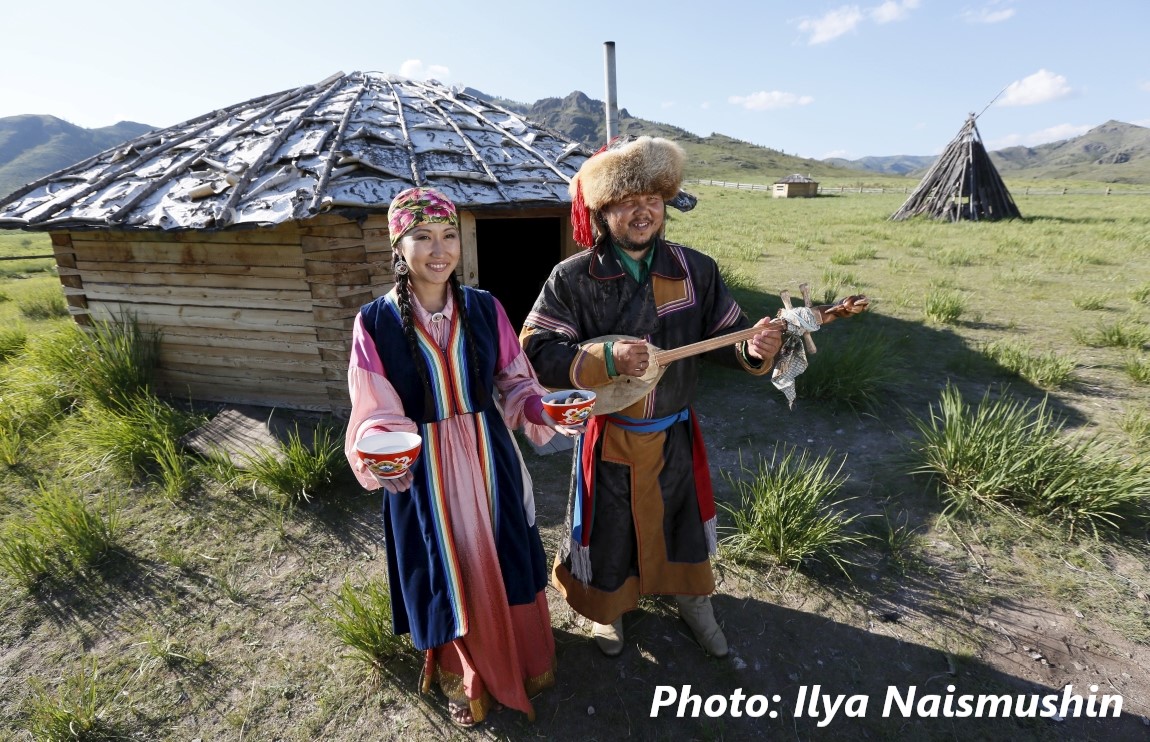
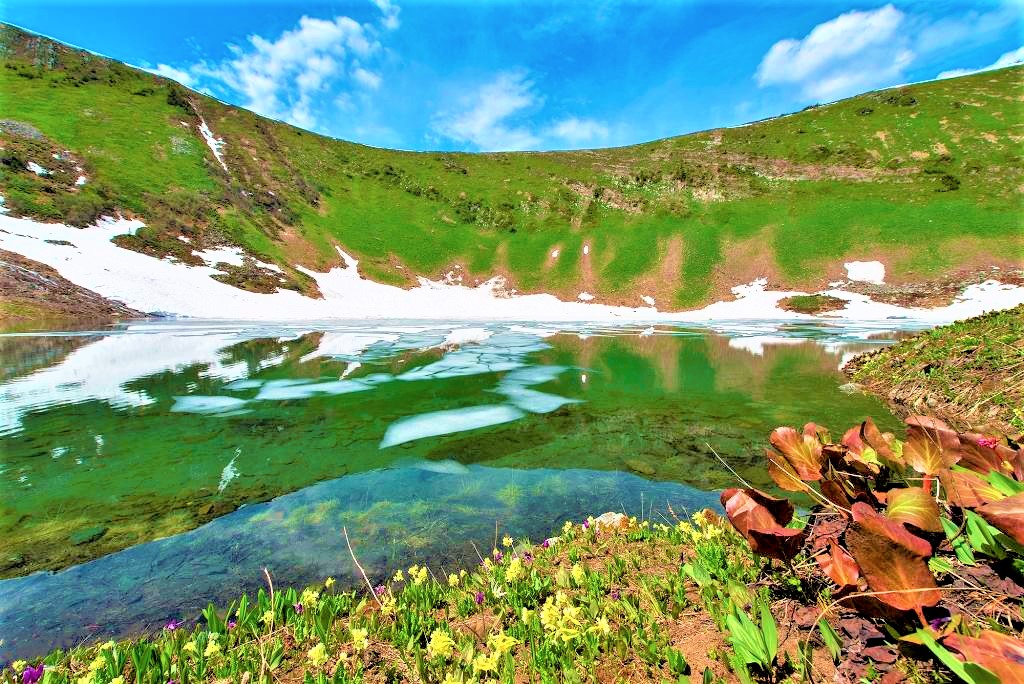


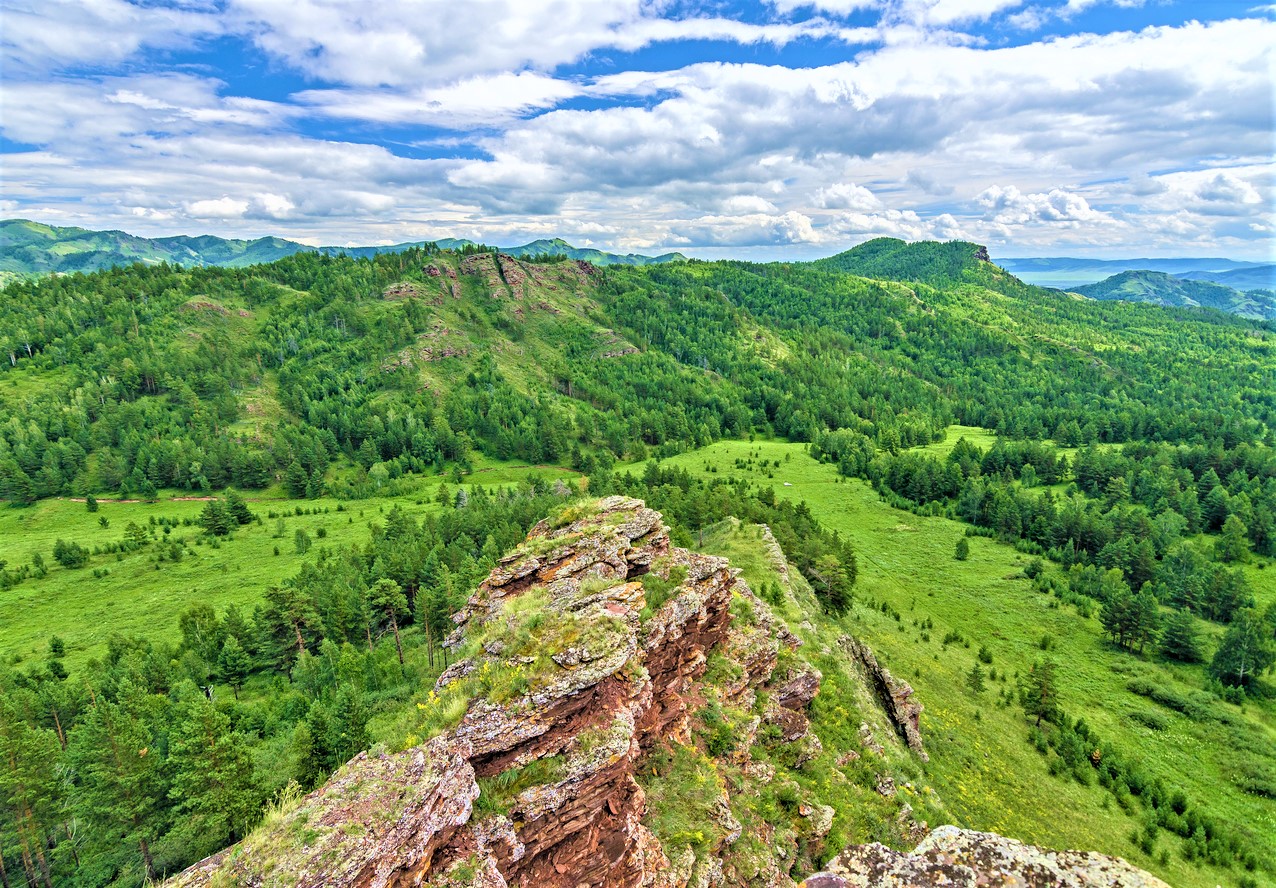 and economic development of the republic achieved through traditional and sustainable nature management (such as sustainable forest management, rational agriculture, revegetation, environmental
and economic development of the republic achieved through traditional and sustainable nature management (such as sustainable forest management, rational agriculture, revegetation, environmental 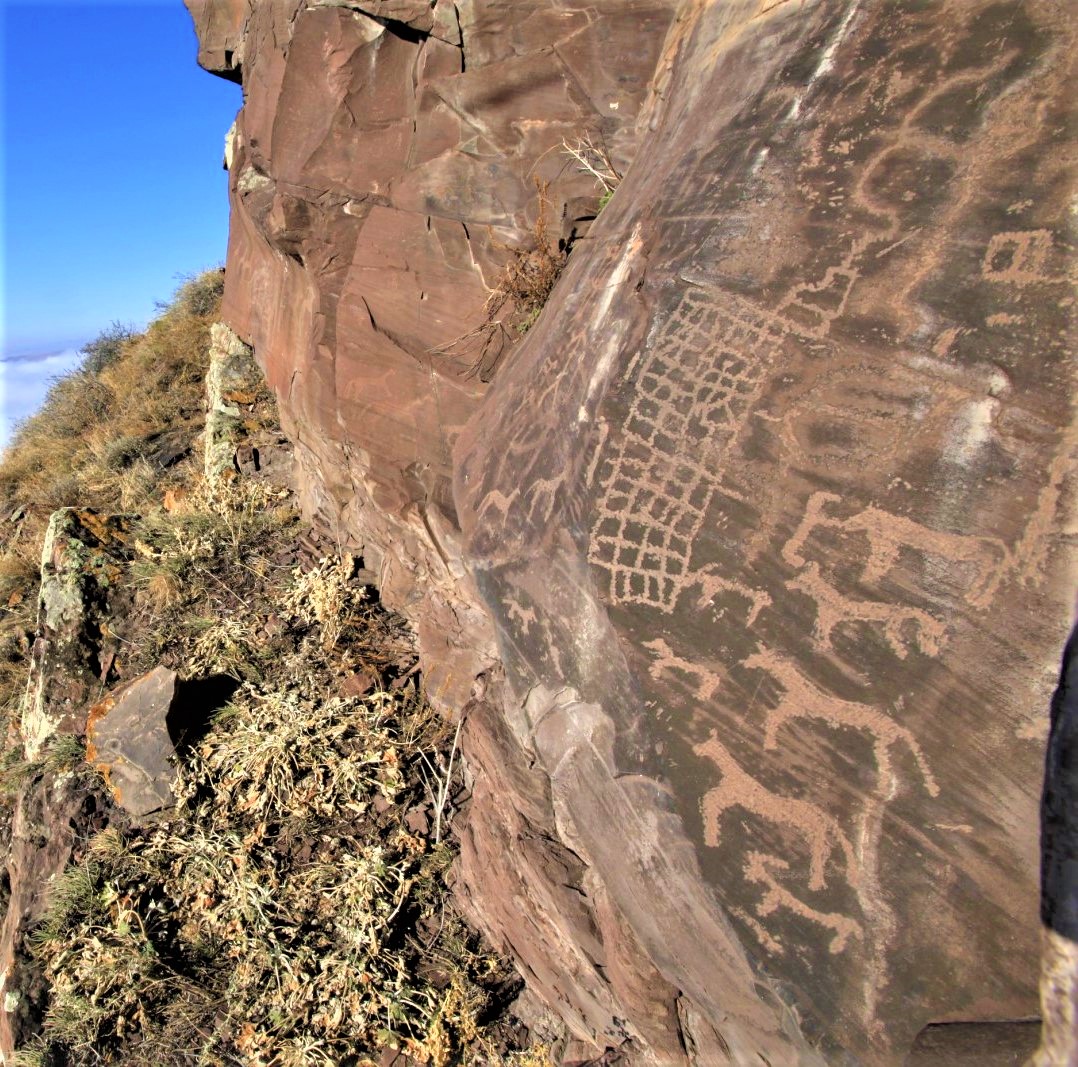 Before you are allowed to enter "The Valley of Kings" you have to sacrifice some bread, a pieces of meat and a beverage to conciliate the spirits. After your visit you must make a fire and hold your hands towards it, to get rid of the evil forces who are all around ю
Before you are allowed to enter "The Valley of Kings" you have to sacrifice some bread, a pieces of meat and a beverage to conciliate the spirits. After your visit you must make a fire and hold your hands towards it, to get rid of the evil forces who are all around ю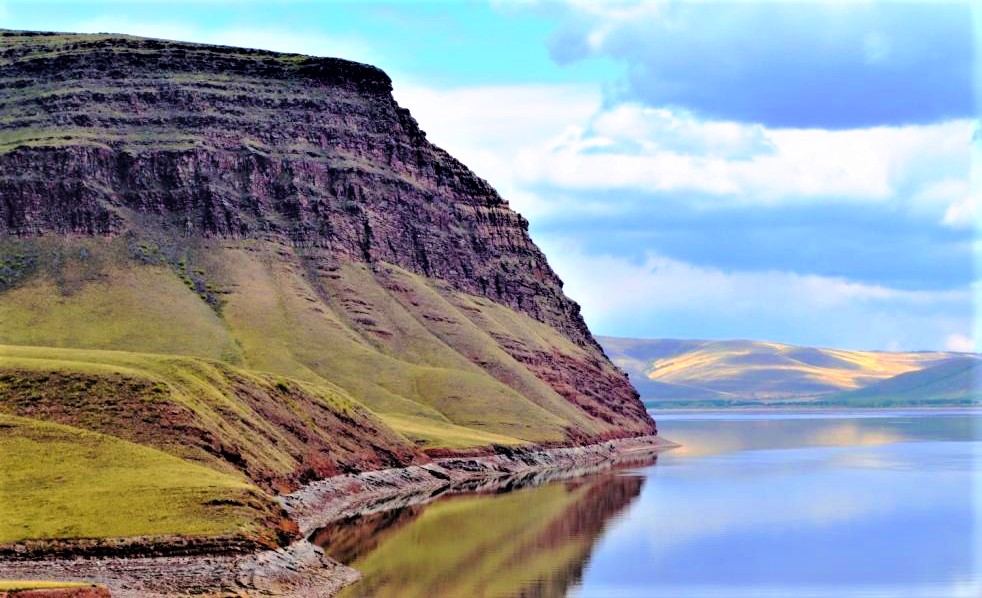 Heritage List is of great scientific interest in terms of natural heritage: with its diversity of landscape; rare endemic plants; 5 reptile species, 148 species of birds and 44 species of mammals. Partially the territory is included in the area"Oglakhty" of the State Nature Reserve "Khakassky" Foothill steppes of the Oglakhty range had been inhabited for at least 5000 years.
Heritage List is of great scientific interest in terms of natural heritage: with its diversity of landscape; rare endemic plants; 5 reptile species, 148 species of birds and 44 species of mammals. Partially the territory is included in the area"Oglakhty" of the State Nature Reserve "Khakassky" Foothill steppes of the Oglakhty range had been inhabited for at least 5000 years. 